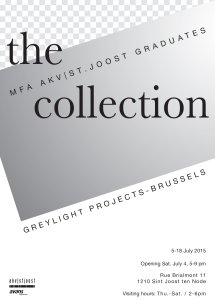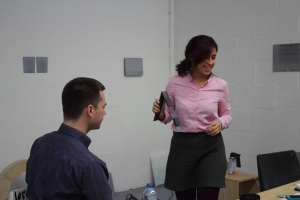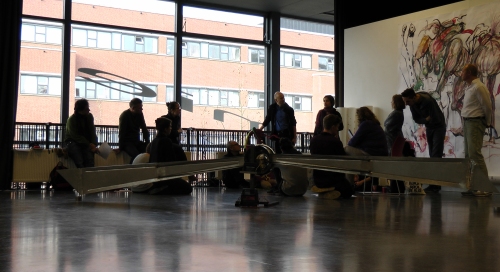Art & Reciprocity: a workshop by Erik Hagoort
Time: April 12 & April 13, 2014
Location: tranzit.ro / București, Str. Gazelei, nr. 44, sector 4
“If I take care of you, others will take care of me”.
Joseph Beuys
“What I demand of myself doesn’t correspond with what I have the right to demand of someone else”.
Emmanuel Levinas
A hands-on workshop to explore reciprocity in social art practice. The aim is to develop a sensibility for the dynamics of reciprocity, in three sessions:
Theory > Practice > Play

To give, to accept and to reciprocate – the combination of these three activities constitutes our social life, according to sociologist Marcel Mauss’ famous essay “The Gift” (1925). Reciprocity, he states, helps us to balance extremes of over-generosity or communism on the one side, and individualism and capitalistic egoism on the other. For Mauss reciprocity is society’s “eternal morality”.
Mauss’ concept of reciprocity has been widely discussed among sociologists, anthropologists, and philosophers. Especially Mauss’ pupil, anthropologist Claude Lévi-Strauss, has contributed to the conviction that reciprocity pervades our society, as a “total social fact”. Lévi-Strauss hailed the transformative power of reciprocity to make people communicate and integrate, and in doing so creating social cohesion.
Recently reciprocity increasingly appeals to artists. Especially in social art practices reciprocity has become something of a strategy. To reciprocate creates situations in which “all participants will be, at once, giver and receiver, producer and consumer, artist and audience”, in the words of curator Michael Brenson. Reciprocity makes, that all participants in the art work are equals and that their roles are reversable, transferable. Art then turns into the social process itself, as Joseph Beuys advocated already: “If I take care of you, others will take care of me”. At least, that is the promise of reciprocity.
Yet, social art practices also generate moral experiences, which are not necessarily reciprocal: generosity, hospitality, responsibility. “What I demand of myself doesn’t necessarily correspond with what I have the right to demand of someone else”, philosopher Emmanuel Levinas has pointed out. So, in daily life, and also in social art practices, reciprocity is contested by other-than-reciprocal, asymmetrical experiences in our relations to others. How do these asymmetrical experiences relate to the experience of reciprocity?
– What is reciprocity? How does it work? What are its dynamics?
– Why does reciprocity appeal so much to contemporary artists?
– Do social art practices indeed hold the promise of reciprocity?
– Do social art practices also question, criticize, or contest reciprocity? And if so, how?
This workshop will explore art & reciprocity in three sessions:
Theory (evening) > Practice (day) > Play (evening)
Participants are offered a compact reader of crucial texts on reciprocity and social art practices.

www.erikhagoort.nl
http://ro.tranzit.org/
www.bucharestair.com























































































